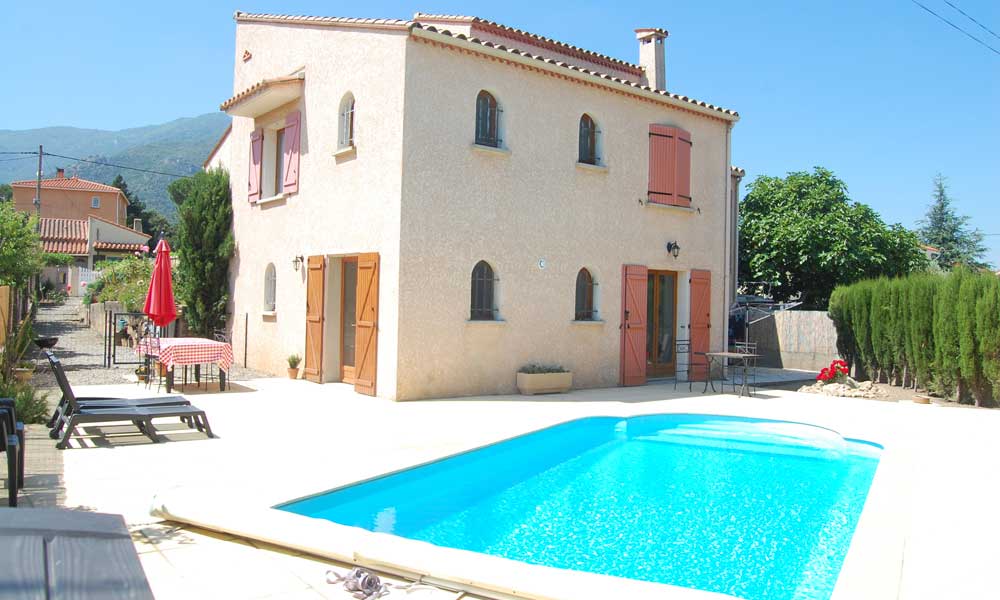This is a guest post from Joanne Mathews of Escape2France. We have collaborated with Joanne and David her business partner and professional photographer to offer photography courses from our gite here in Languedoc Roussillon.
Trip to the Mediterranean
This beautiful area, from where Escape2France conducts its French-based photographic tours, sits alongside the Mediterranean coastline between the port of Marseille and the Spanish border. Having been subjected to a recent name change, we are now to be known, rather surprisingly, as Sud de France rather than Languedoc-Roussillon – a simplification that will not be popular locally. Ah, the universal dislike of change! They’ve already renamed the airport in Carcassonne – much to the chagrin of the local populace! Sud de France, saturated as it is in history and awash with chateaux and vineyards, also incorporates the foothills of the Pyrenees. Through it all ambles deep gushing river gorges, colourful market towns, birds of prey, hovering over the newly tilled vineyards, slinky Pyrenean lynx hunting the wild boar and alongside it all, isolated and beautiful villages, each one built on a rising, almost nipple-like rock, topped with a chateau and a church, bells clanging regularly across the red tuille roofs – not to call the faithful but to tell vineyard workers it’s time to eat! Because of this stunning scenery, the region makes an excellent base for photographic tours, breaks and holidays with its undulating scenery and the dreadful history of the Cathars to absorb. Briefly, in the 13th century the church of Rome ruthlessly put down heretics and sects such as the Cathars who threatened their authority and financial stability. The church, with the strong support of the Kings of France, disbanded and persecuted the Templars and they outright murdered the Cathars, who had sought refuge in a series of chateaux and towers along the edge of the Pyrenees Mountain range. However, today, the Cathar and Templar crosses are proudly displayed on the flags of the region. The local people, who don’t consider themselves to be French at all, but d’Oc (Occitan), typically Mediterranean – each small, dark, round, friendly, chaotic and noisy – and, of course, everywhere, the superb quality wines produced in this, the largest vineyard in the world.
It’s the start of springtime here in the Sud de France. Searching for inspiration, I decide to take the short road-trip to the coast. On the drive down to the favoured wine chateau – Château Rouquette sur Mer on the Massif de la Clape – a wine-growing area sited on a small cliff-faced mountain separating Narbonne from the Mediterranean Sea – I have my “plastique” (a 5 litre wine container) in one hand – and in the other, my camera. All around, the mimosa is flowering – clear splashes of yellow against the wintery sunlight but most exhilarating of all, when I approach the Mediterranean Sea, are the colours of the sky. I have only ever seen such blues in the work of artists, who flock to this coast for the intensity of the light. The deepest blues are high above me, the palest near the horizon, with every brilliantly reflected variation pulled in different directions across the water by the breezes and the currents. Such light can mesmerise – you feel pulled towards the sea, clutching your camera and feeling slightly breathless about these, the first truly possible outdoor shots of the year. Pink almond blossom illuminates the vineyards which are otherwise empty of colour and which appear slightly drab against the beautiful, newly emerging hedgerow greens. I’m in a hurry – I’m afraid the scene will vanish if I don’t catch it soon. But then one change in the wind direction, one cloud – everything will be altered, will have disappeared before the shot is in the bag!
As I drive over la Clape, I realise the windscreen is spattering – the rain is falling. This is one of the driest parts of France – less than 50 cms of rain each year – and virtually all of it in November and March. Recent descriptions of our weather in springtime include “you know the Mediterranean weather in the spring – up and down, like the mood of the people ……” I look out over the vineyards to my left – their sheltered situation meaning that even so early in spring, there is the merest hint of a green wash to the vines. The sun has encouraged a few buds to burst forth, whilst the edges of the fields are carpeted in deep-purple and pale lemon – hundreds of heavy headed Iris flowers peering at the sun, planted throughout the generations by vineyard owners, who consider the Iris their symbol, always giving a pictorial feeling that Easter has arrived early. Looking watery, the combination of sun and rain has produced a rainbow of course. More Mediterranean magic!
I take my photographs, fill my “plastique” and I drift away to the étangs, a string of lakes which sit along the Mediterranean shoreline and which, in the springtime, attract large quantities of migrating birds – pale, watery colours wash over this inland sea combined with pink flamingos, standing one-legged in the water – and I consider a summer full of light and sunshine. Always a hot summer, filled with photographers, summer food and wine, tours around the castles, chateaux and vineyards – and conclude that such idyllic times are there to be shared.
Come and join us! Follow the Escape2France link for further details of our summer tours.

